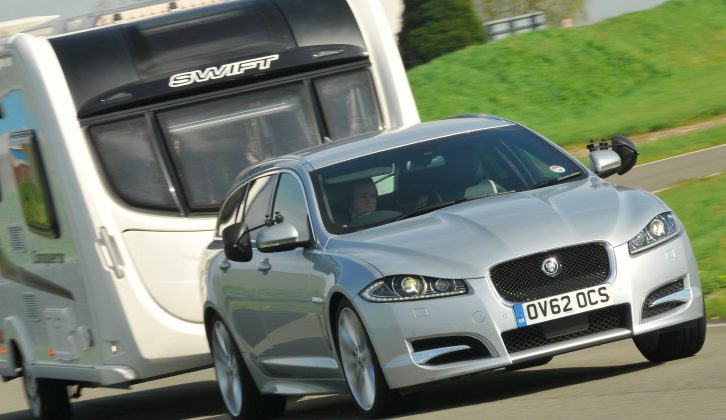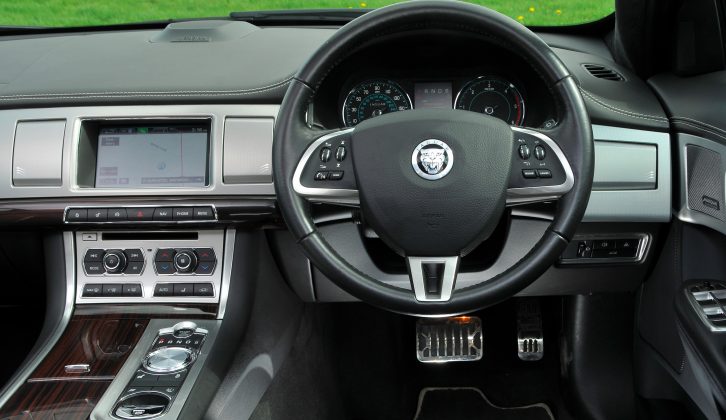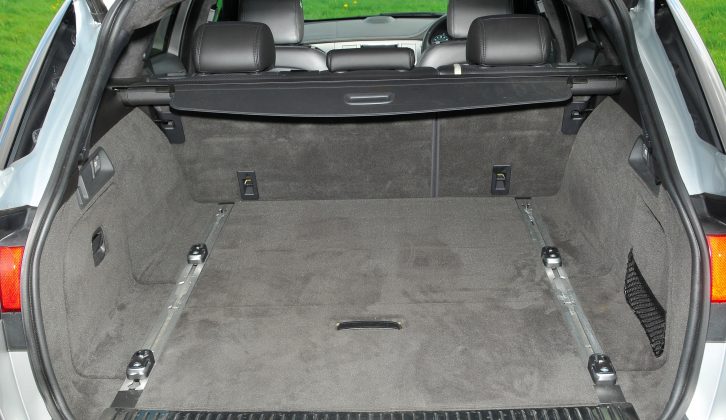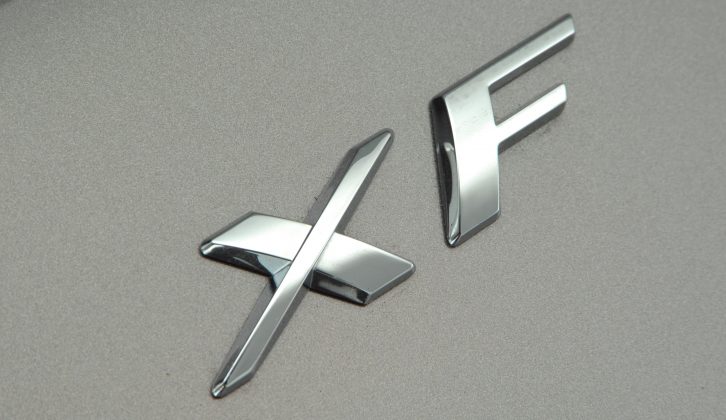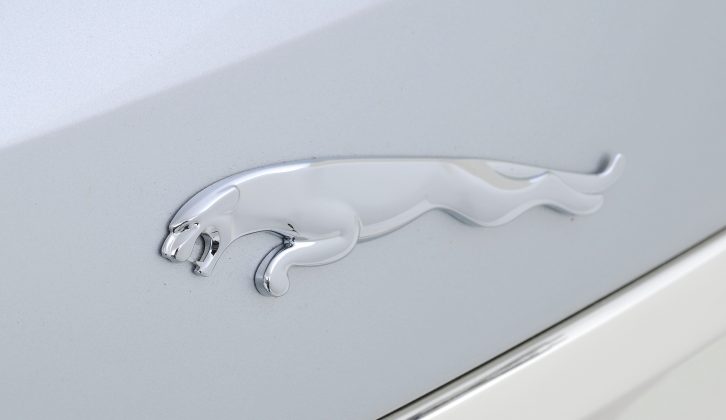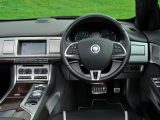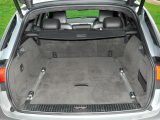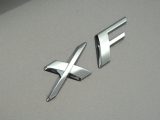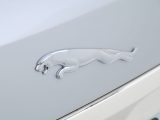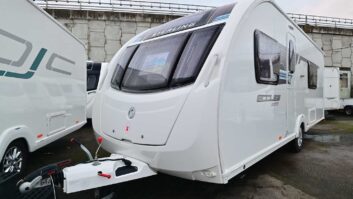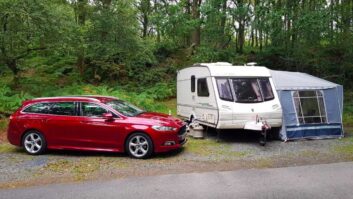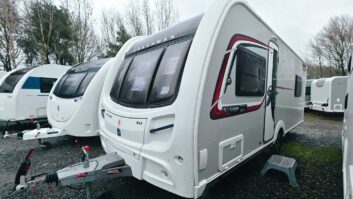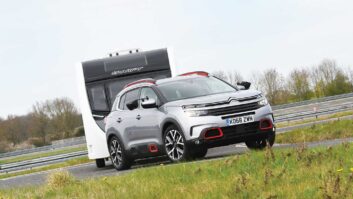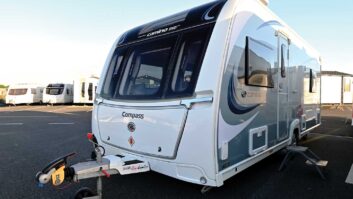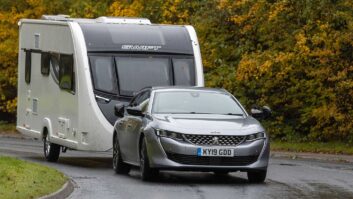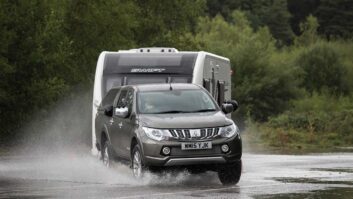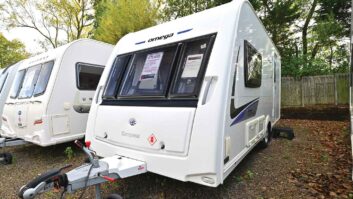It is hard to believe these days, but Jaguar was on its knees in 2007.
It had a product line comprised of a dressed-up Ford Mondeo, and larger executive and luxury offerings that were a pastiche of cars Jaguar had been making decades before.
The company’s cars were selling like cold cakes and its future was measured in months, not years.
However, behind the scenes, the company was banking its survival on a super-sleek, high-tech new model – the XF saloon – that had nothing to do with cars from decades gone by.
It worked. The stunning exterior turned buyers’ heads, and the sheer drama and theatre of the interior sealed the deal.
Come 2012, the car that best suits tow car buyers, the XF Sportbrake estate, was introduced. It offered all the style of the saloon, with a large load area thrown in – perfect for caravan holidays.
But what is it like as a used buy and, crucially, what tow car ability does it have?
Model history
The Jaguar XF was launched at the end of 2007 with three engine options. Petrol fans had the choice of a 3.0-litre V6 or a 4.2-litre V8, although we’d avoid the V8 as a tow car unless you have a real passion for Nectar points.
By far the biggest seller was the company-car-friendly 2.7-litre V6 diesel, which was strong and smooth. In 2009, however, the 2.7 diesel was replaced by a 3.0-litre V6 diesel in two states of tune: 237bhp or 271bhp.
In 2011, as part of a comprehensive package of updates that included sleeker new headlights and various other styling tweaks, the company introduced a 2.2-litre four-cylinder diesel that offered the promise of 52.3mpg.
In 2012, the Jaguar XF took overall honours in the Tow Car Awards, and the Sportbrake estate was launched. Building on the saloon’s success, the wagon won class honours in both 2013 and 2014.
With the more powerful of the two 3.0d engines fitted, it made light work of towing a caravan, and it was comfortable and quiet to boot. Stability was exceptional, too.
However, here we focus on the lower-powered V6 diesel model in high-end Portfolio specification. It’s still pretty strong while being reasonably economical and emits just 163g/km of carbon dioxide – good for those who want to tow in luxury while keeping one eye on the running costs.
On the road, the XF is stable and precise, even with a van in tow, and it proved unshakeable in high-speed lane-change manoeuvres at the test track.
The eight-speed automatic gearbox is smooth and chooses the right gear when you want it to. However, you can take control of the gearshifts using the steering-wheel-mounted paddles, should you want to. It’s just a shame that the 75kg towball weight is a little low.
All XFs are well equipped, with leather-trimmed seats and steering wheel, climate control, a touchscreen infotainment system and heated front seats.
The Sportbrake estate is the version those who tow regularly should look to, because it has a decently shaped, 550-litre load bay with the rear seats raised.
Trouble spots
The Jaguar XF is reasonably reliable on the whole, but there are a few things to watch out for.
The brakes appear to be a weak spot, with XFs requiring a change of discs and pads well before the average for the class.
In addition, the satellite-navigation system can play up occasionally, routing the car via the shortest route instead of the quickest without being asked to. This means it’ll direct you off a motorway on to a busy B-road if that route is only fractionally shorter. A software update should solve this.
The XF is definitely not a fan of short trips from cold in town, because these can cause its diesel particulate filter (DPF) and exhaust gas recirculation valve (EGR) to clog up, requiring an expensive dealer trip to clean them out. It’s best to take your car for a short blast on a motorway or A-road once a week to keep them clear.
One of the car’s safety systems can also land you with a huge bill – even when it works exactly as intended. The XF is fitted with a Pedestrian Safety System, and in the event of a collision with a person it uses small explosive charges to raise the bonnet and prevent the pedestrian from coming into contact with the hard parts on the top of the engine.
The problem comes when you have an entirely unintended collision with a small animal such as a badger, or even a bird, because this can cause the system to activate, even at walking pace. It can cost in excess of £2000 to replace the airbags and hinges.
Verdict
If you’re a person who needs a reasonably practical car, but don’t want to look like you need a reasonably practical car, the Jag XF Sportbrake is the perfect choice. It looks sensational, both inside and out, it’s roomy and practical, and it makes an excellent tow car.
Even though it has a 3.0-litre V6 diesel engine up front, running costs shouldn’t be prohibitive, with an average economy figure of 46.3mpg and annual VED of just £185.
Our pick of the range is the XF Sportbrake 3.0d V6 (241) Portfolio. It’s strong and stable while hitched up, and comfortable and good fun when it isn’t. It comes stacked with kit, too.
However, we’d avoid the XF Sportbrake 2.2d SE, because the lower-powered 2.2-litre diesel is the weak point in the range, as far as towing fans should be concerned.
What you need to know
Here we are looking at Jaguar XF Sportbrakes built between 2007 and 2015 which, at present, can cost anything from around £13,500 right up to £42,000.
XF saloons are available from around the £5000 mark, but these will definitely be on the leggy side. If you can, it’s better to have a five-figure budget when looking for an XF.
The XF Sportbrake comes into view once you top £10k, too, with early cars kicking off from around £13,500.
For that you’ll get a strong, smooth performer that shouldn’t cost an arm and a leg to run. It’s also roomy, quiet and well specified, making it almost the perfect tow car.
Here are some useful figures (for a 2014 XF 3.0d V6 – please click here for others):
- Kerbweight 1880kg
- 85% match 1598kg
- Towing limit 1850kg
- Towball limit 75kg
According to quotes received from PF Jones, to fit a Witter flange towbar to a used Jaguar XF would cost £138.24, or £246.24 for a Witter detachable towbar.
Servicing-wise, Servicing Stop says that for the 3.0d V6 variant, an interim service will cost £165.62 and a full service will be £235.07.
Perfect if you need a reasonably practical car, but don’t want to look like you need a reasonably practical car
